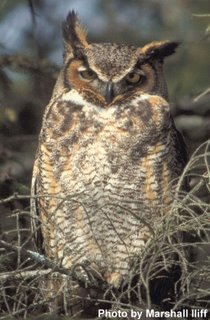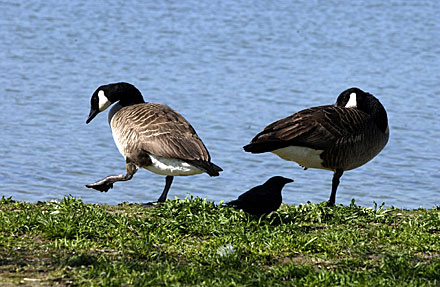 Above: Skeleton of a Dodo bird at American Museum of Natural History
Above: Skeleton of a Dodo bird at American Museum of Natural HistoryScientists beware: Don't count your extinct bird species because one of them may hatch.
Several supposedly extinct birds have recently been "rediscovered," raising hopes that others not seen for ages may still be taking to the skies.
"The real message of rediscoveries is that we didn't look hard enough in the first place," said Nigel Collar of UK-based conservation group BirdLife International.
"Rediscoveries" fall into two categories, the first being birds that were written off as extinct but subsequently found.
The second includes birds not seen for decades -- often because conflict made their home range inaccessible -- but that were not necessarily considered extinct.
One of the most startling avian "resurrections" was the New Zealand storm petrel, which was positively sighted in 2003. Believed by many to be extinct, it was previously only known from fossil material and three 19th century specimens. A group of bird watchers saw the black-and-white sea birds off New Zealand's North Island in January 2003.
Also in 2003, the long-legged warbler -- not seen by experts since 1894 -- was found alive in the mountains of Fiji.

Left: Two white-winged guans rest on perches in their cage in a protected area in northern Peru. A quarter of century ago, Perus white-winged guan, a species native only to this Andean bird paradise, was considered as dead as a dodo. Discovered in 1877 by a Polish ornithologist, the birds were believed extinct for 100 years until their rediscovery in 1977 by Gustavo del Solar, a hunter-turned-conservationist who founded a special breeding project to reintroduce it to the wild.
Last year, the rusty-throated wren-babbler -- not seen for almost 60 years -- was spotted in India's Himalayan mountains.
For some experts, the "Holy Grail" of lost birds has been hoisted with the rediscovery of the ivory-billed woodpecker, a large bird with striking looks that was believed to have fallen victim to the logging industry.
The southwestern African country of Angola, which is emerging from three decades of civil war is proving to be rich in "lost birds." South African ornithologist Ian Sinclair has been to Angola four times since war ended in 2002 and has found 18 endemic species not been seen and identified by experts for decades.
"We discovered that civil war, while obviously bad for people, was good for the habitat and the environment," Sinclair told Reuters. "All of these huge coffee plantations were abandoned ... A lot more habitat is available as a result."
A six-day expedition earlier this year yielded positive sightings of the orange-breasted bush-shrike and the white-headed robin-chat -- not seen by scientists since 1957.
The group also spotted a single pair of black-tailed or slender-tailed cisticolas. These are only found in Angola and neighboring Democratic Republic of Congo and had not been seen in the wild since 1972.
Swiestra's francolin -- similar to a grouse or partridge -- is the one Angolan endemic that Sinclair has yet to rediscover.
"It's only known from a single specimen collected in September 1964 in northwestern Zambia. So it's been off the map for 40 years," he said.
Also being sought is the pink-headed duck of India and Myanmar. There have been no reliable sightings since the late 1940s but there are reports of rural folk hunting it in Myanmar.
 Still, there are clearly some no-hopers, such as the famed dodo of Mauritius, a large flightless bird that died out long ago.
Still, there are clearly some no-hopers, such as the famed dodo of Mauritius, a large flightless bird that died out long ago.
Right: Watercolour of extinct Pink-headed Duck by Bhawani Das. Painted between 1777 and 1782 for Lady Impey in India, from living bird. National Museums Liverpool
Despite the new finds, BirdLife says the overall situation of the world's birds is worsening.
In a recent report, it said more than a fifth of the planet's bird species faced extinction as humans ventured further into their habitats and introduced alien predators.
* Reuters Story
















































